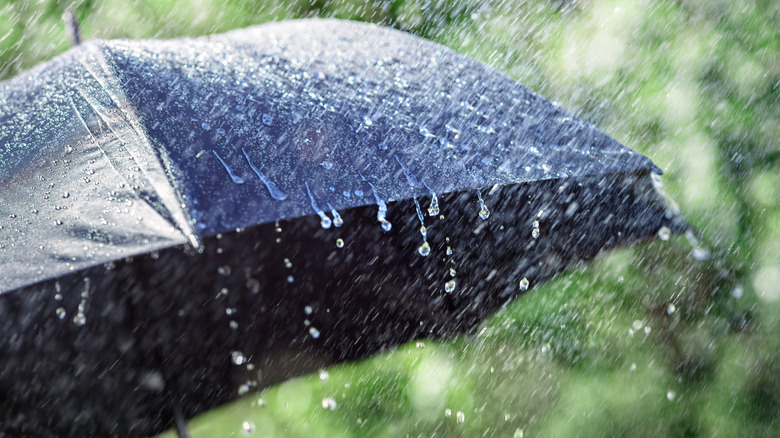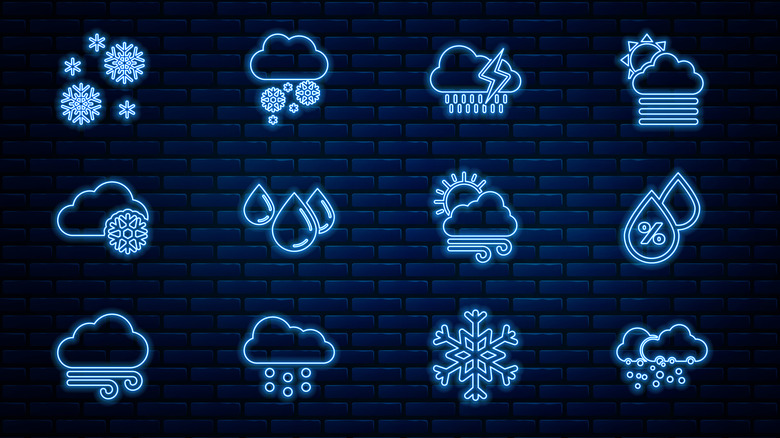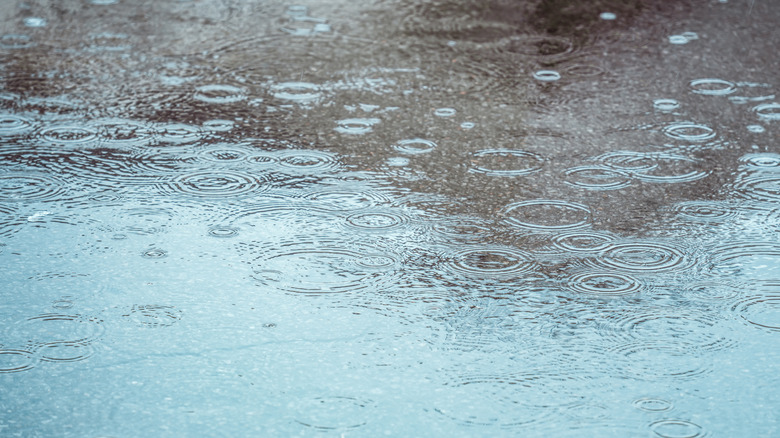That 30 Percent Chance Of Rain Doesn't Mean What You Think It Does
There are certain mysteries in life that we all just sort of accept. Some mysteries are so complex that even scientists can't explain them, but far more common are the mysteries that could be solved if we all just bothered to actually look up the answers.
For instance, we've all looked at the weather forecast and seen the percentages next to the "rain" section, but do any of us actually know what it means? Either we each think we do, or we're not sure and haven't yet looked into it. In fact, the amount of people who don't actually know what the rainfall percentage actually means is probably much bigger than we all realize.
Bob Dylan once said, "You don't need a weatherman to know which way the wind blows," but what about rain? Apparently we need a weatherman and then someone to tell us what the weatherman is actually talking about. Thankfully, we've gathered all the information here so we can finally put this easily-solvable mystery to bed and reveal that the percentage in weather forecasts doesn't mean what you think it does.
The rain percentage is more confusing than you might think
We all sort of know what meteorologists do and how their forecasts work, but when it comes to that rainfall percentage section of the forecast, many of us have either wrongly decided for ourselves what it means or are completely clueless. Does 20% mean a 20% chance of rain? Does it mean rain will fall for 20% of the day, or that 20% of a city's surface area can expect precipitation? Well, it's none of those.
It's important to note that there are many ways that the chance of rain is calculated, and that therefore not all forecasts rely on the same approach to producing this number. That said, there is a general explanation for the rainfall percentage which is perhaps slightly more complicated than you might expect.
As the Royal Meteorological Society explains, this percentage actually refers to the proportion of forecasts that predict rain. In our 20% scenario, it would mean that 20% of simulations forecast rain. That is, if we look up a forecast early in the day and it forecasts 20% rainfall, that means that 20% of days that started almost exactly like this day have involved rainfall. If that sounds needlessly confusing, it all comes back to how weather forecasts are actually carried out.
The chance of rain is based on multiple forecasts and their predictions
Weather forecasting is not an exact science, and a big part of that is the fact that small errors can quickly become major errors. That is to say, that if a forecast's initial conditions are input even slightly wrong it can affect predictions in a significant way as the forecast goes on. This is known as chaos theory, and was first identified by meteorologist Ed Lorenz. Working in the 1950s, Lorenz used early computers to model weather forecasts. He would input his initial figures to see what kind of predictions he would get, then try again with very slight changes to those initial numbers, only to get a completely different forecast. Essentially, Lorenz discovered that no matter how good the initial numbers were at describing current conditions, they would never be perfect, and we'd therefore never have a perfect forecast.
To combat this phenomenon, contemporary forecasts use supercomputers which use the observations of satellites to provide in-depth forecasts based on billions of data points. As the Royal Meteorological Society notes, even these supercomputers are somewhat at the mercy of chaos theory, in that their sophisticated forecasts can diverge from one another within days. For rain, that timescale is dramatically shorter, reducing to a few hours in some instances.
This is why multiple forecasts are produced using many different starting conditions, to provide an overall picture of what is the most likely scenario. It's this process, known as ensemble forecasting, that produces the rainfall percentage. Say every single forecast based on slightly different starting conditions predicts rain, then the chance of rain will be 100%. Again, none of this is an exact science, which is frustrating given that rain water is pretty important and it would be great to have an exact idea of when it can be expected. Still, at least we can all be a little clearer on this particular mystery.


